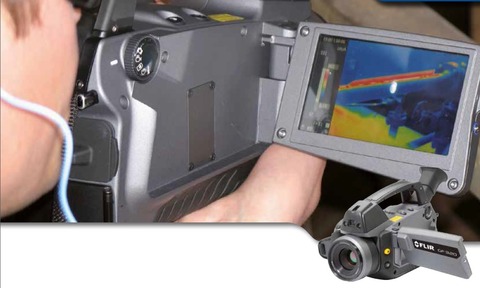
A report from FLIR Systems shows how the latest optical gas imaging camera technology allows smaller Volatile Organic Compound (VOC) leaks to be detected from a safer distance.
Detecting leaks of volatile, gaseous compounds can be dangerous, making the safety of detection techniques vital for maintenance engineers.
Optical Gas Imaging (OGI) cameras make use of non-contact measuring Infrared technology to detect, in real-time, small leaks from several meters away and big leaks from hundreds of meters away.
Important features when choosing an OGI camera for VOC leak detection are detector performance/tuning possibilities and camera sensitivity, including related sensitivity enhancement features.
The FLIR report focuses on developments to its FLIR GF320 camera that make it suitable for oil & gas, petrochemical and chemical companies applications.
The GF320 features an ultra sensitive Indium Antimonide (InSb) quantum detector to visualise gases and small temperature differences in the 3.2-3.4 micrometer waveband.
Using advanced cold filtering technology significantly improves the sensitivity of the camera by eliminating background radiation in unwanted wavelength regions.
FLIR claims that operating only in a wavelength band where VOC’s have a high absorption spike enables the GF320 to visualise much smaller details and detect lower concentration gas leaks than any other passive OGI
camera on the market.
Setting the appropriate temperature span and level (mid-point) is essential to obtaining optimal optical gas imaging results because a wide span will provide less image detail.
GF320 features proprietary High Sensitivity (HSM) image subtraction video processing mode to enable users to search for gas without having to set the level of the image before narrowing the span.




